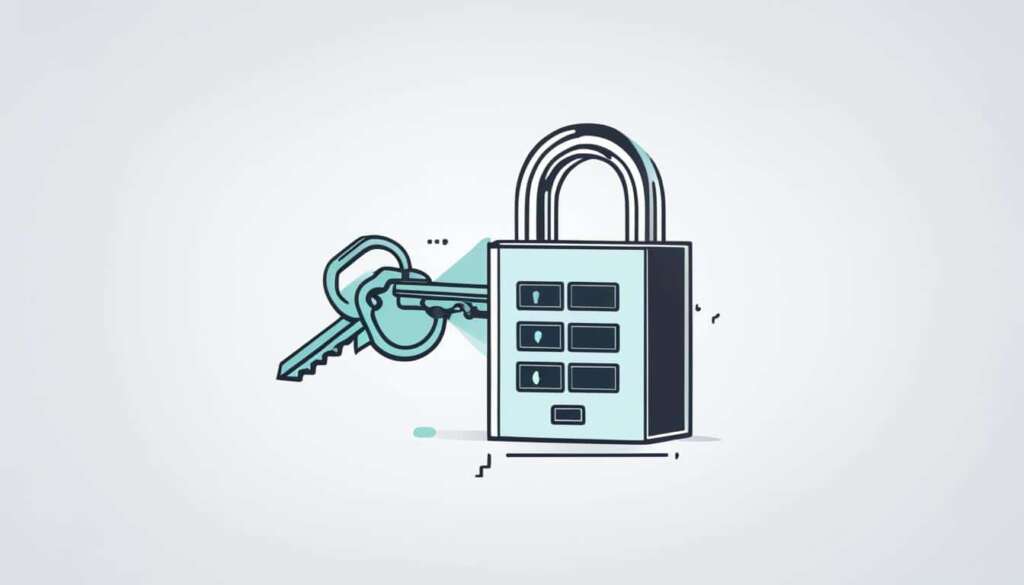Table of Contents
Two-factor authentication (2FA) is a security system that requires two distinct forms of identification to access something. It can be used to strengthen the security of online accounts, smartphones, and even physical doors. The first factor is a password or PIN, while the second factor can be a code sent to a smartphone or a biometric feature like fingerprints. While 2FA enhances security, it is not foolproof and can still be compromised through phishing attacks, account recovery procedures, and malware.
How Does Two-Factor Authentication Work?
Two-factor authentication (2FA) is an essential security measure that requires users to provide two different authentication factors to verify their identity. By adding this extra layer of security, it becomes significantly harder for attackers to gain unauthorized access to devices or online accounts.
When it comes to the authentication process, users are typically prompted to enter their password or passcode as the first factor. This initial authentication factor is a crucial step in verifying the user’s identity. However, relying solely on a password or passcode can be vulnerable to breaches or stolen credentials.
To enhance security, the authentication process requires a second factor. This factor can be a security token, such as a physical device or an app-generated code that changes periodically. It can also involve biometric features like fingerprints or facial scans. This second factor adds an additional layer of protection, as it confirms that the person attempting to access the account is indeed the legitimate user.
“Two-factor authentication significantly reduces the risk of unauthorized access by requiring the user to provide two distinct types of authentication factors.”
Once the user has entered their credentials as the first factor, they must prove their possession of something unique to them, such as a smartphone or a biometric feature. This proof can be provided by entering a code generated by an authentication app or scanning a fingerprint or face using the device’s biometric capabilities.
After successfully providing both factors, the user is authenticated and granted access to the application or website. This two-factor authentication process strengthens security measures by ensuring that even if one factor is compromised, there is an additional layer of authentication to protect the user’s account.
Implementing two-factor authentication is highly recommended to enhance the security of online accounts, especially for sensitive services such as email accounts, social media applications, cloud storage services, and financial services.
- Use a password or passcode as the first authentication factor
- Employ a second factor, such as a security token or biometric feature
- Prove possession of the second factor to complete the authentication process
By following these steps, users can significantly reduce the risk of unauthorized access and protect themselves from potential security breaches.
Examples and Benefits of Two-Factor Authentication
Two-factor authentication (2FA) offers enhanced security for various applications and services. Let’s explore some examples of how 2FA is used and the benefits it brings.
Example 1: Apple Account
An example of 2FA implementation is with Apple accounts. When users log in to their Apple accounts, they must provide not only their password but also a multi-digit code that is sent to their trusted devices. This additional step ensures that only authorized individuals can access their Apple accounts, protecting sensitive data and personal information.
Example 2: Business Networks
Many businesses recognize the importance of securing their networks and data. To prevent unauthorized access, they deploy 2FA for their employees. When signing into business networks or remote desktop software, employees are required to enter an additional code, in addition to their regular login credentials. This ensures that only authorized personnel can access confidential business information, adding an extra layer of protection against potential data breaches and unauthorized access.
Benefit 1: Protection Against Stolen Passwords
One of the key benefits of 2FA is that it provides added protection against stolen passwords. Even if hackers manage to obtain someone’s password through methods like phishing attacks or malware, they would still need the second authentication factor to gain access to the account or system. This significantly reduces the risk of unauthorized access, protecting sensitive information from falling into the wrong hands.
Benefit 2: Defense Against Phishing Attacks
Phishing attacks are a common method used by cybercriminals to deceive users into revealing their login credentials. With 2FA in place, even if users unknowingly provide their password to a phishing site, the attackers would still require the second authentication factor to breach the account. This acts as a defense mechanism, preventing attackers from compromising accounts and causing potential harm.
Recommended Usage of 2FA
- Email accounts
- Social media applications
- Cloud storage services
- Financial services
Enabling 2FA for these services ensures an added layer of security, protecting personal and sensitive data from unauthorized access.

| Examples | Benefits |
|---|---|
| Apple Account | Enhanced security for personal data and information |
| Business Networks | Protects confidential business information from unauthorized access |
Tips for Implementing Two-Factor Authentication
Implementing two-factor authentication (2FA) is a crucial step towards enhancing the security of your online accounts and electronic devices. One of the common methods to set up 2FA is through the security settings of smartphones or electronic devices, with SMS authentication being widely used.
When implementing 2FA, it is essential to choose the right authentication provider that caters to your individual or business needs. Microsoft’s Authenticator app is a reliable choice, offering both two-factor and multi-factor authentication options.
However, it is equally important to ensure that the website or app used for authentication is trustworthy and secure. By following best practices and considering other forms of authentication, such as mobile apps or hardware tokens, you can further strengthen the security of your accounts and devices.
FAQ
What is two-factor authentication (2FA)?
Two-factor authentication (2FA) is a security system that requires two distinct forms of identification to access something. It can be used to strengthen the security of online accounts, smartphones, and even physical doors.
How does two-factor authentication work?
Two-factor authentication requires users to provide two different authentication factors to verify themselves. The first factor is typically a password or passcode, while the second factor can be a security token or a biometric feature like fingerprints or facial scans.
What are the examples and benefits of two-factor authentication?
Examples of two-factor authentication include the use of 2FA for Apple accounts, where users need both a password and a multi-digit code sent to their trusted devices for access. The benefits of two-factor authentication include added protection against stolen passwords and phishing attacks.
What are the tips for implementing two-factor authentication?
Implementing two-factor authentication can be done through the security settings of smartphones or electronic devices, with SMS authentication being a common method. It is important to find the right two-factor authentication provider that suits individual or business needs.







